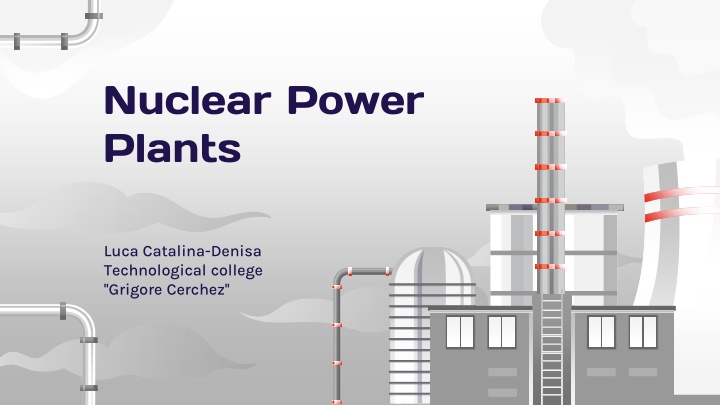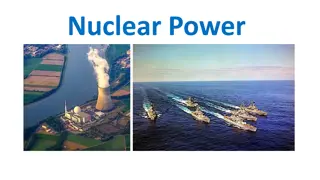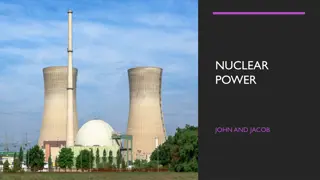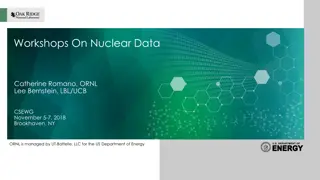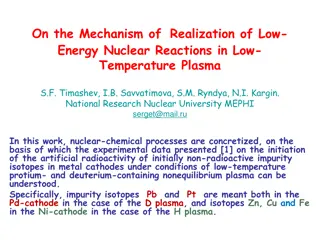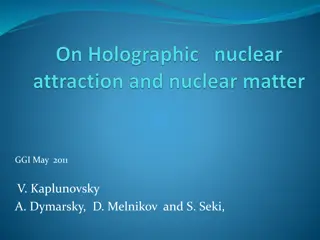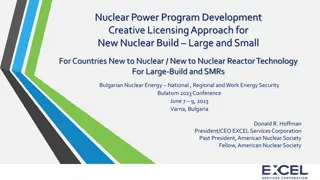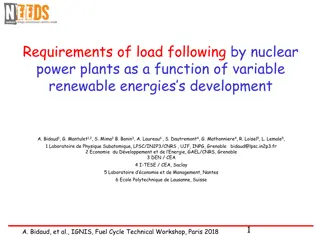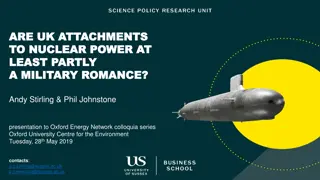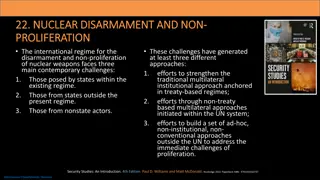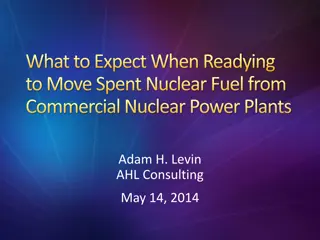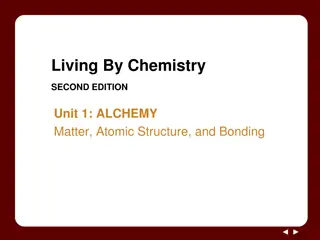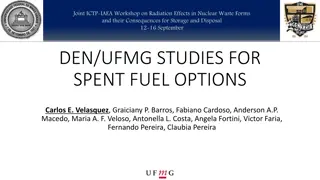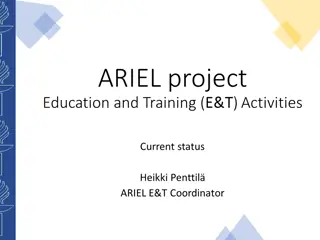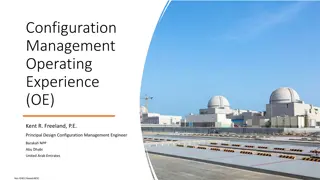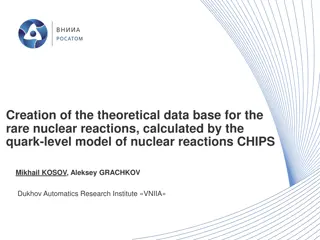Nuclear Power Plants
Nuclear energy is harnessed through nuclear fission in power plants to create electricity. Explore how nuclear reactors work, their advantages and disadvantages, and the global impact of nuclear energy generation.
Download Presentation

Please find below an Image/Link to download the presentation.
The content on the website is provided AS IS for your information and personal use only. It may not be sold, licensed, or shared on other websites without obtaining consent from the author.If you encounter any issues during the download, it is possible that the publisher has removed the file from their server.
You are allowed to download the files provided on this website for personal or commercial use, subject to the condition that they are used lawfully. All files are the property of their respective owners.
The content on the website is provided AS IS for your information and personal use only. It may not be sold, licensed, or shared on other websites without obtaining consent from the author.
E N D
Presentation Transcript
Nuclear Power Plants Luca Catalina-Denisa Technological college ''Grigore Cerchez''
What is nuclear power? Nuclear energy is the energy in the nucleus, or core, of an atom. Atoms are tiny units that make up all matter in the universe, and energy is what holds the nucleus together. There is a huge amount of energy in an atom's dense nucleus. In fact, the power that holds the nucleus together is officially called the "strong force." Nuclear energy can be used to create electricity, but it must first be released from the atom and this is done throug a process called nuclear fission nuclear fission.
What are nuclear power plants? A nuclear power plant, is a series of machines that can control nuclear fission to produce electricity. The fuel that nuclear reactors use to produce nuclear fission is pellets of the element uranium.
How do they work? In a nuclear reactor, atoms of uranium are forced to break apart. As they split, the atoms release tiny particles called fission products which are causing other uranium atoms to split, starting a chain reaction. The energy released from this chain reaction creates heat.The heat created by nuclear fission warms the reactor's cooling agent. A cooling agent is usually water. The cooling agent, heated by nuclear fission, produces steam. The steam turns turbines, or wheels turned by a flowing current. The turbines drive generators, or engines that create electricity.
Advantages and disadvantages of nuclear power plants The main disadvantages are that nuclear energy is very expensive because building nuclear plants require big investments. Also we need to consider that if the power plants are not handled correctly they could harm the human life and the enviroment, and as an example we could take the Cernobyl explosion. The avantages of nuclear energy are that is one of the few types of energy that have zero emmisions so that means that is a clean energy. And despite producing massive amounts of carbon-free power, nuclear energy produces more electricity on less land than any other clean-air source so the land footprint is significantly smaller. And not to forget that nuclear energy produces minimal waste.
Nuclear energy on the globe As of 2011, about 15 percent of the world's electricity is generated by nuclear power plants. The United States has more than 100 reactors, although it creates most of its electricity from fossil fuels and hydroelectric energy. Nations such as Lithuania, France, and Slovakia create almost all of their electricity from nuclear power plants.
8,500,000,000 kWh Energy generated by a nuclear plant per year
Biblography https://www.iaea.org/newscenter/new s/what-is-nuclear-energy-the- science-of-nuclear-power https://whatisnuclear.com/ https://www.energy.gov/ne/articles/3 -reasons-why-nuclear-clean-and- sustainable
Thank you for your attention
